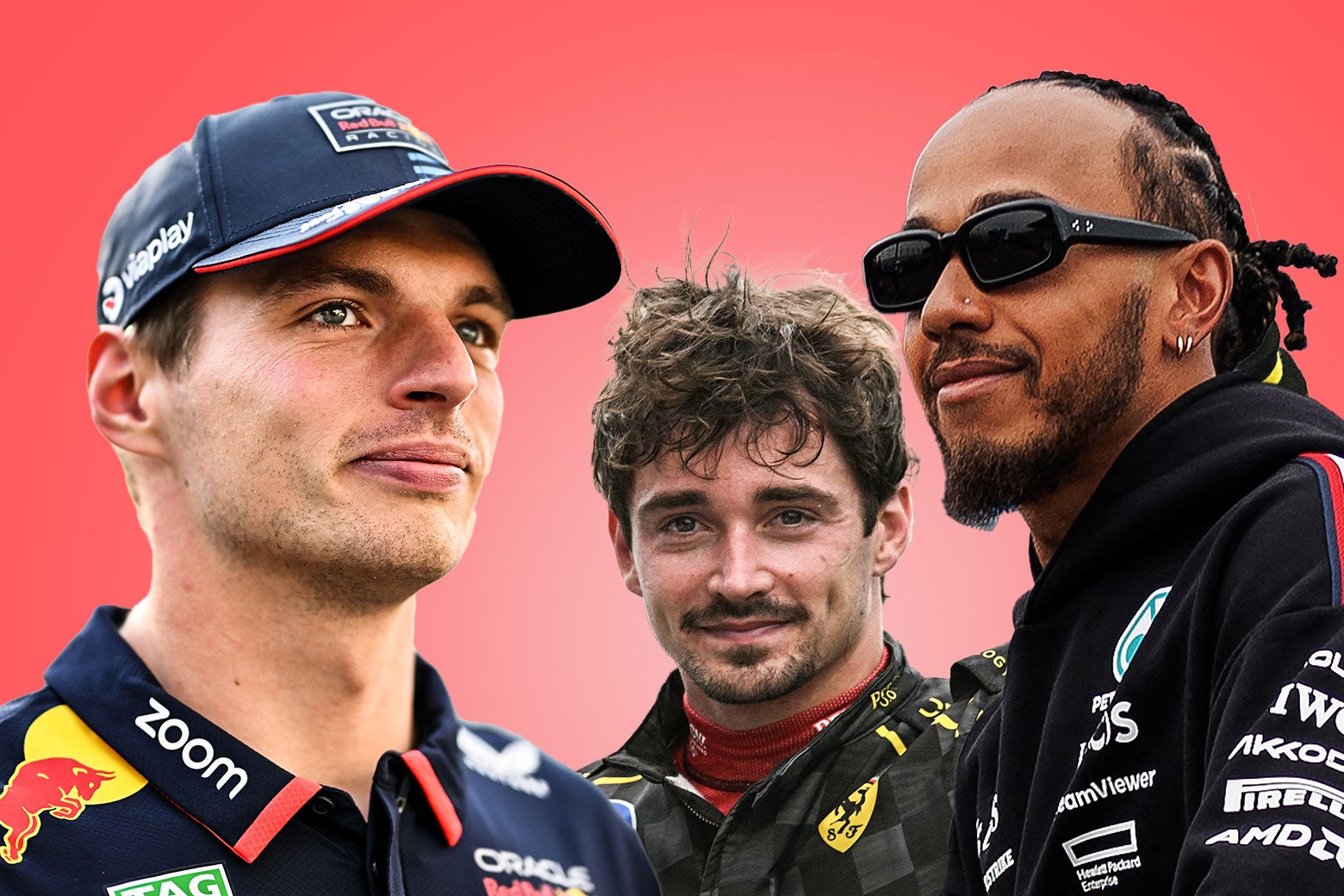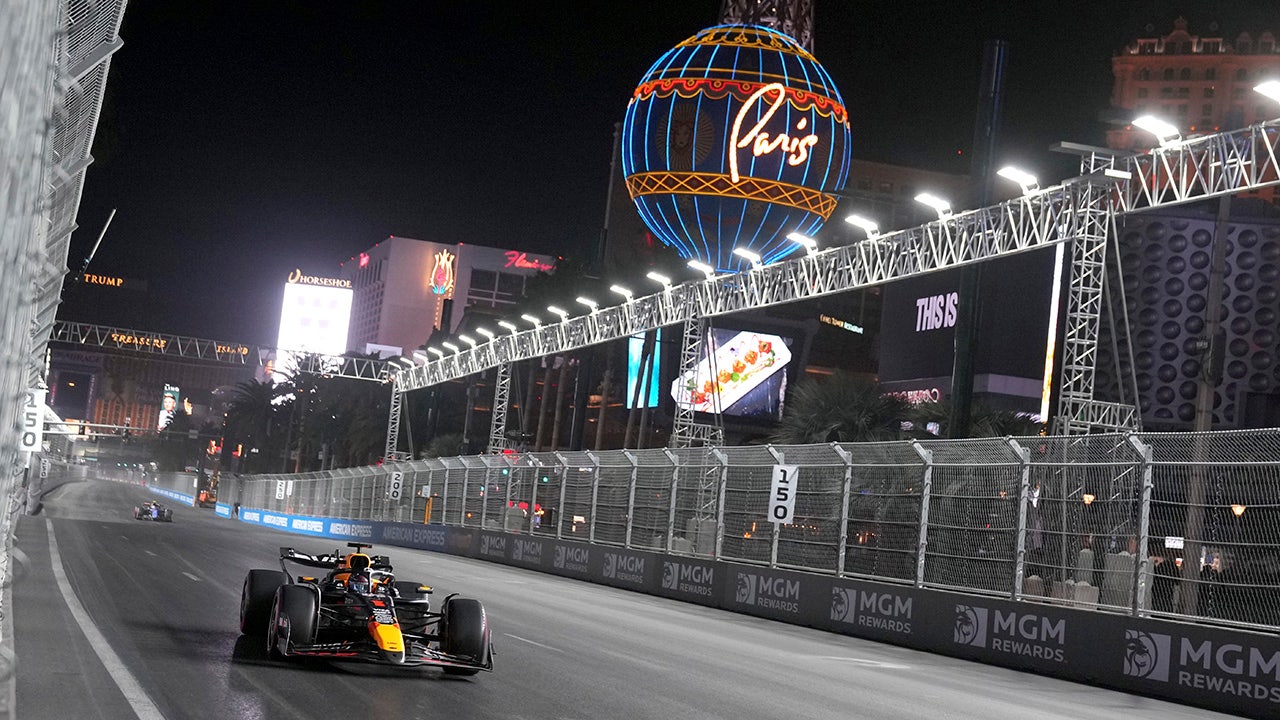Sports
A Faddish Sport That Got Boring Is Now an Unholy Mess. Thank God!

Maybe your Formula 1 origin story was like mine. During the pandemic, I cued up Drive to Survive, the Netflix docuseries that was both wildly entertaining and deliberate propaganda for F1. Netflix gave way to watching live races, which gave way to obsession. Late in 2021, I was rapt watching a captivating championship race between Lewis Hamilton and Max Verstappen—the most dramatic the sport had ever seen, more seasoned historians made clear. I got up early on the East Coast to watch the dramatic, sort-of-rigged final grand prix of the year, the one that gave Verstappen his first seasonlong title over Hamilton, the greatest driver Formula 1 had ever seen. Soon I was interviewing F1 mainstays and trying to learn every little thing I could about this predominantly non-American tradition.
Then the 2022 season arrived. It brought new car regulations that reshaped the competitive pecking order. One team, Red Bull Racing, got its design changes right. The rest of the teams—especially Mercedes, which had been the dominant team—got them different shades of wrong. It was clear a few months into 2022 that the season would be a joke, a yearlong coronation of Verstappen as the best driver and Red Bull as the best team. There was almost no competition at the front of the grid. Of 22 races, Verstappen won 15. The driver title was his with four races left to go. Things got worse the next year: Verstappen won 19 of 22 grands prix, the most lopsided season anyone has ever put together. I was not around by the end of that season, having reclaimed my Sunday mornings from the boredom of his weekly wins.
My F1 swoon was hot, heavy, and done. I’d become a big fan during what happened to be the most dramatic championship run possible. Longtime fans and media warned me that the sport wasn’t usually like that. Then it over-rotated in the other direction, becoming utterly noncompetitive at the top. I would not be anything more than a casual fan as long as the monotony continued.
Well, well, well! After monitoring the situation for months and conferring with F1 friends who never left, I am ready to make the call: A new day has dawned. Nearly three years after F1 was last interesting, the series is once again stimulating the senses. More cars are going vroom vroom vroom. More drivers are in contention for the championship, and the constructors’ title for the best team has become a wide-open race where, if anything, the recently dominant Red Bull is likely to fall. The sport has thrown up a bat signal, telling bandwagoners it’s time to come home for a few months. Lights out and away we go.
It did not look like things would unfold this way. Verstappen claimed pole position in each of the season’s first seven races, clearly driving faster than anyone else on the grid, and he converted five of those seven poles to victories. But lately, he’s been in a dogfight, winning two of the last nine. Ferrari’s Charles Leclerc won at the boring but classical Monaco Grand Prix in late May and added another win at the most recent race, the Italian Grand Prix. Hamilton, the legend, has managed a pair of wins, including an epic, emotional triumph at the British Grand Prix in his home country. McLaren’s driver tandem of Lando Norris and Oscar Piastri has combined for three wins, and lately, it sure seems like the orange McLaren car is the fastest out there. In three of the past four races, it’s been an orange car qualifying fastest. McLaren’s won two of those races, while Red Bull has been shut out.
For non-Verstappen drivers, the past few months must have been psychic salvation. Leclerc had a long and devastating history of close misses at Monaco, but he got over that and won. Norris had a long history of not winning races at all—zero in 110 tries, to be exact—before getting two in quick succession. Even Hamilton, the old lion who used to win all the time, was working on a dry spell of more than two seasons when he won in Britain. Things had gotten so bleak for Hamilton that he agreed early this year to leave Mercedes for Ferrari, a vote of no confidence that would’ve been unthinkable a few years ago and also set the stage for a messy few months of driver wheeling and dealing around the sport.
F1 has a long, public lame-duck period for drivers either moving to other teams or losing their spots. Hamilton has raced this season with the whole world knowing it’s been his last ride with Mercedes, the end of one of the most successful team–driver partnerships ever in motorsport. His move to Ferrari meant the end in the red car for Carlos Sainz, the Spaniard No. 2 to Leclerc, whose future was unclear for months before he agreed to join bottom-feeder legacy brand Williams Racing next year.
This jumble has resulted in an awkward, high-stakes competition unlike what you can find in any other sports right now. Red Bull has just an 8-point lead on McLaren for the constructors’ championship, and betting markets heavily favor McLaren to overtake the going-away champs of 2022 and ’23.
To preserve its slim lead with a car that seems to have been outpaced, Red Bull is heavily reliant not just on Verstappen but on No. 2 driver Sergio “Checo” Pérez, who has been just about useless this season and faces weekly speculation about how soon Red Bull will fire him and replace him with another contestant in the game of driver musical chairs. McLaren has its two drivers established, but that’s become complicated in its own way: Norris has a shot at Verstappen for the individual drivers’ championship (he trails 303 points to 241 with eight races left), but McLaren harmed his bid at the last race by not having his teammate cede second position so that Norris could chase down Verstappen in the standings. Meanwhile, Ferrari is in a not-too-distant third place in the standings, but to move up, the team of the Tifosi will need a box-office final eight races from Sainz, whom they’ve already fired for next year. (Hamilton will take his spot next to Leclerc.)
Even the lower-level teams have quite a bit going on. The one American team in F1, Haas, just had one of its drivers banned from the next race, the first time that’s happened in F1 since 2012. (The driver, Kevin Magnussen, was deemed at fault for a dumb crash.) The one American driver on the grid, Logan Sargeant of Williams, got fired in the middle of the season after not finishing in the top 10 (or thus scoring any points) in any races. One entire team, Sauber, has zero points on the whole year. That happens periodically but is hard to do, and no one has been goose-egged since Haas in 2021. Alpine, the team attached to French automaker Renault, exiled its team boss for the third time in four years. Aston Martin, another midfield team, just hired away a key Red Bull car designer for a reported 20 million–pound base salary, more than what most F1 drivers get paid.
It all feels like the F1 that attracted so many new fans three or four years ago. The races could go either way. The teams in the championship mix are all racked with internecine strife. Verstappen, the best driver in the world, is losing his grip on the drivers’ title in a car that seemed spectacular a few months ago but now looks ordinary, and he is definitely furious about it. The bad teams are throwing around huge bags of cash and discarding mediocre drivers left and right. It is an unholy mess, and the outcome is up in the air. The series will soon come to the United States for an Austin race in October and a Las Vegas race in November. And at least this time, the grotesque disruption to the daily lives of the people of Nevada will be for a race that’s worth watching.









